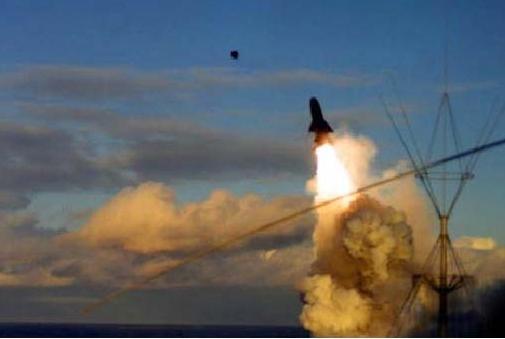Military equipment usually becomes obsolete quickly enough. The exception is some samples that have become real masterpieces of design thought. Kalashnikov assault rifle, B-52 bomber, several more examples of products of military-industrial complexes of the most industrially developed countries make up the "honorary list of old-timers". It also has the Granit anti-ship missile, developed in the late 1970s and early 1980s. It is in service with the Russian Navy today.
At NATO headquarters, it is customary to assign proper names to samples of Soviet and Russian military equipment. Apparently, they consider that the Russian words do not fully express the essence of the weapons they represent. Indeed, is Granite a suitable name for a rocket? Hard rock, stone, has nothing to do with the largest anti-ship projectile in the world, capable of destroying an aircraft carrier. According to the NATO classification, the name is different, Shipwreck, which means "shipwreck." This is clearer.
The dimensions of the P-700 missile are commensurate with the dimensions of the MiG-21 interceptor, for example. Length - 10 meters, wingspan 2.6 m. Starting weight is 7 tons, including a 750-kg combat charging compartment, as an option - nuclear.
The speed of the Granite rocket changes at different phases of flight, at a combat rate it exceeds 4,000 km / h, and at an approach stage it is 1,500 km / h.
Starting is possible both from the surface and underwater position of the carrier.
All these technical characteristics are impressive today, three decades after the adoption of the model for service. However, progress is relentless, and in the XXI century such indicators of speed and mass of the CCD will not surprise anyone. Strange as it may seem, on-board electronics are noteworthy.
The backlog of the USSR in the field of information technology was considered an obvious fact. How Soviet engineers managed to create a guidance system that fully meets the requirements of the third millennium on the element base of the 70s of the XX century remains unknown, but many parameters of this device today are a military secret.
For example, the memory size of the onboard computer of the Granit rocket is not published, but it is known that information about all the ships of a potential enemy is included in it. On its basis, the built-in computer makes a decision on the priority of the target, and then acts according to the algorithm.
Granite rockets can operate autonomously, be guided by satellites of a space constellation, or carry out a massive attack (up to 24 pieces at once). In the latter case, several control systems operate together, using radio communication channels as an interface. In this case, the role of the central server goes to the computer of that rocket, which will be higher than the others. If it is knocked down by the enemy’s missile defense, then within a few microseconds, the control system of another missile will take on the role of leader. An attack of one target by two missiles is excluded. Additional option: electronic suppression of hostile interference and setting their own.

The Granite cruise missile has never been used in combat conditions, so it is possible to judge its possible destructive ability only by the results of tests and exercises. They are successful, and it will be just fine if other evidence of its effectiveness is not required. It is enough that our country has such protection.